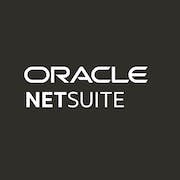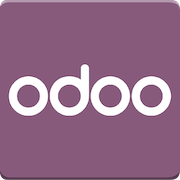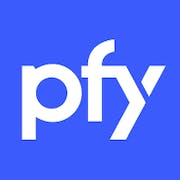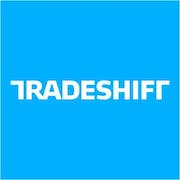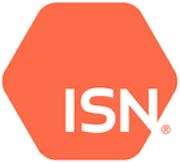Looking for the best procure-to-pay (P2P) solution? Our comprehensive buyer's guide has got you covered. Make an informed decision for your business about the right software choice.
Procure-to-pay (P2P) software is a powerful solution that streamlines the entire purchasing process from start to finish. It has become a business-critical tool that empowers organizations to effectively control their procurement functions, automate manual processes, and maximize visibility over their spending. With an intuitive user interface and customizable features that cater to various industries, a P2P tool has revolutionized the way companies do business by accelerating accuracy, compliance, and cost-saving benefits throughout the entire procurement cycle. If you're looking for a comprehensive guide on how to choose the best solution for your business needs, you've come to the right place. In this guide, we'll cover everything you need to know about P2P technology, including its key features and benefits. So, let's dive into the world of procure-to-pay technology.
What is procure-to-pay (P2P) software?
This is a suite of tools designed to streamline the procurement process within a business. It typically covers everything from requisition and ordering to invoicing and payment. By automating these processes, P2P software provides organizations with greater visibility and control over their procurement activities, improves efficiency, reduces errors, and drives down costs.
Its common use cases include:
- Purchase requisition management: It enables users to submit and manage purchase requests quickly and easily, while providing visibility and control to approvers and managers.
- E-sourcing and contract management: This program helps procurement teams to identify, evaluate, and select suppliers, negotiate contracts, and manage supplier relationships.
- Purchase order management: It also streamlines the ordering process, from creation and approval to delivery, while providing insights into supplier performance and order history.
- Invoicing and receipt management: The platform automates the receipt and processing of invoices, matching them to purchase orders and contracts, and facilitating payment.
- Supplier management: A P2P system helps organizations to evaluate, monitor, and manage supplier performance, compliance, and risk.
This application is used by a wide range of companies of all sizes and across different sectors. Some of the typical industries and businesses that use it include:
- Retailers and wholesalers use it to manage procurement and inventory.
- Manufacturers utilize itto manage supply chain and production processes.
- Financial and professional services manage spend and expenses with it.
- Healthcare providers can manage supplies and equipment using a procure to pay platform.
- Public sector organizations use itto manage procurement and spending.
Top benefits of utilizing a procure-to-pay tool
With the increasing need for efficiency and cost-effectiveness, utilizing a P2P app can help businesses achieve better results and improve their bottom line. Here are some of the main benefits of using one:
- Improved accuracy and compliance: P2P software automates transactions, eliminating manual errors and ensuring compliance with regulations, policies, and contracts. This significantly reduces the risk of errors and fraud, and improves the accuracy of financial records.
- Faster processing times: This procurement tool streamlines the procurement and payment processes, reducing processing times and allowing for faster transactions. This helps businesses improve their cash flow and meet financial obligations in a timely manner. Research firm Levvel found that procurement software reduced lifecycle times for purchase orders, invoice processing, and other P2P workflows by 56% compared to manual processes.
- Cost savings: By automating processes, a P2P system reduces the need for manual labor and reduces costs associated with paperwork, processing, and invoicing. Additionally, it enables businesses to negotiate better terms with suppliers and reduce the cost of goods and services.
- Improved supplier relations: It provides a platform for improved communication and collaboration with suppliers, enhancing relationships and reducing conflicts. This can lead to better pricing, improved delivery times, and better quality products and services.
- Real-time visibility: The software provides real-time visibility into procurement and payment processes, enabling businesses to monitor spending, identify issues, and make informed decisions. This helps businesses manage cash flow, reduce risk, and improve financial performance.
- Enhanced control and reporting: It provides businesses with tools to monitor and manage spending, set limits and approvals, and generate reports and analytics. This enables better control over procurement and payment processes and improves decision-making capabilities.
Key features of procure-to-pay technology
This robust platform streamlines the entire purchasing process, from requisition to payment, whether you're a small business looking to simplify your procurement procedures or a large conglomerate aiming to optimize your supply chain. Here are 10 common features that can benefit your company:
1. Requisition management:
This feature enables employees to submit purchase requests online, improving accuracy and reducing the risk of errors and fraud.
2. Purchase order management:
Automated purchase order generation ensures that orders are accurate, authorized, and delivered on time.
3. Supplier management:
A P2P solution facilitates maintaining accurate and complete supplier records, streamlining the supplier selection process while reducing risks and errors.
4. Catalog management:
Catalogs enable quick and easy purchase requisitioning, ensuring adherence to contracted pricing, improving compliance, and reducing the purchase cycle time.
5. Invoice management:
P2P technology automates invoice matching, reducing errors and the need for manual intervention, thus increasing accuracy and efficiency.
6. Contract management:
This function allows the creation and management of contracts, from negotiation to renewal, ensuring that all contract terms are met.
7. Payment management:
It automates the payment process, enabling timely and accurate payments to suppliers, mitigating risks and errors significantly.
8. Governance, risk, and compliance management:
It also ensures adherence to the relevant regulations, policies, and procedures, reducing risks and promoting compliance.
9. Reporting and analytics:
The tool provides instant and actionable insights into procurement performance, empowering informed decision-making.
10. Integration with other systems:
A P2P application integrates with other enterprise systems, such as ERP and financial systems, streamlining data sharing and reducing manual intervention.
Things to consider when purchasing a procure-to-pay solution
By integrating purchasing, bill processing, and payment activities into a single platform, P2P software offers significant cost savings, enhanced control, and improved compliance. However, not all P2P software solutions are created equal. In this section, we will highlight key factors that businesses should consider when purchasing one.
Integration and compatibility
One of the most essential factors to consider is whether it can easily integrate with other systems you're already using, such as ERPs, CRMs, or other financial systems. Seamless compatibility not only saves you time but also helps prevent data errors and maintains consistency across different platforms.
Functionality and customization
Different businesses have different procurement needs and requirements. Your P2P solution should be able to support your diverse business needs and workflows. Features such as custom fields, approval workflows, complex pricing structures, and inventory management functionalities can be critical when evaluating a prospective tool. It is essential to ensure that it can adapt to your business needs rather than forcing your business to accommodate the software.
User interface and accessibility
Another crucial aspect is usability. The system should be simple to use, easy to navigate, and provide access to critical information in real-time. Depending on your business needs, you'll want to consider how accessible it is from remote locations and different devices such as tablets and mobile phones.
Vendor support and customer services
Technical glitches and other support challenges can be frustrating and costly, especially when they affect critical business processes. Therefore, you must select a vendor that offers reliable support and customer service. Consider factors such as the vendor's support hours, the response time for support requests, and the types of support offered, such as phone, email, or chat.
Security and compliance
One of the most important factors businesses should consider when purchasing such an app is security and compliance. It is essential to ensure that the vendors adhere to relevant security and regulatory requirements such as SOC 1, SOC 2, and PCI DSS. The program should also offer robust authentication, authorization, and encryption functionalities, especially considering the sensitive nature of procurement-related data.
Selecting the right P2P software is a crucial decision that can significantly impact your procurement operations and overall business performance. By considering the factors outlined above, you can choose a P2P platform that aligns with your business goals, workflows, IT infrastructure, security, and support needs.
Emerging market trends for procure-to-pay software
P2P technology continues to evolve, with new trends emerging that promise to shape the industry for years to come. eMarketer predicts that the number of P2P users will increase by 21%by 2026, and it is estimated that 70% of smartphone users will use P2P apps by then. Here are the biggest trends to watch out for in this field:
- Rise of AI and machine learning: P2P software is incorporating cognitive technologies like AI and Machine Learning to automate complex processes. This will help companies eliminate errors, reduce costs and improve efficiency.
- Increased focus on spend analytics: Companies are making use of P2P solutions to gain better visibility into their spending patterns. By analyzing data, businesses can identify opportunities to negotiate better deals with suppliers and reduce costs.
- Mobile enablement: With the proliferation of smartphones and tablets, mobile enablement has emerged as a key trend in the P2P technology space. Mobile apps provide employees with on-the-go access to the P2P system, enabling them to quickly approve requests and keep the process moving.
- Cloud-based solutions: Cloud-based P2P software is gaining traction due to its scalability, flexibility and low maintenance costs. With cloud-based solutions, businesses can access their systems from anywhere, at any time, and on any device.
- Improved user experience: P2P app vendors are putting greater emphasis on user experience, making their systems more intuitive and easier to use. This will help reduce training costs and improve adoption rates among employees.
The P2P software industry is rapidly evolving, making it essential for companies to stay informed about the latest trends to remain competitive and leverage new functionalities effectively
Conclusion
To conclude, P2P software represents a powerful paradigm shift in the way we think about data sharing and networking. Whether you are a developer, a tech enthusiast, or a casual user, staying informed about P2P technologies will be crucial in navigating the digital landscape of the future. Leveraging the full functionality of this comprehensive procurement solutioncan aid in making critical business decisions, optimize performance, and gain a competitive edge.

